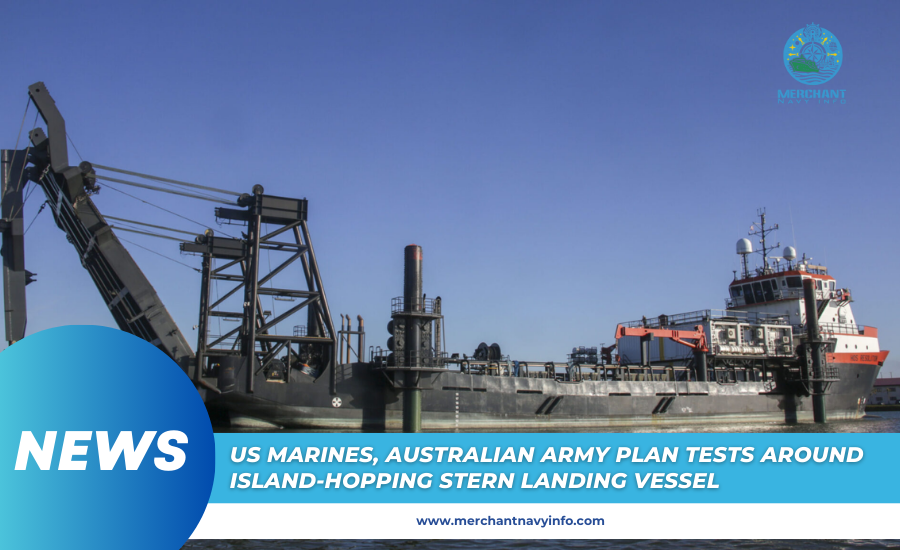
The US Marines and the Australian Army are planning tests of the SLV that can hop from island to island.
The SLV is the experimental predecessor to the Marine Corps’ coveted medium landing craft. The US Marine Corps’ main technology development agency is preparing to conduct a series of tests with the Australian Army using an experimental ship to serve as the base for the service’s future island landing craft.
The experimental ship in question is the Stern Landing Vessel (SLV), which the Marine Corps Warfare Laboratory began experimenting with last year to determine requirements for the envisioned Landing Craft Medium (LSM). The LSM is part of the Marine Corps Continuing Force design. It will be specifically designed to transport the Marine Littoral Regiment and its equipment between islands like the First Island Chain in the Indo-Pacific.
MCWL Commander Brigadier General Simon Dolan said at a defense briefing today that “foreign cooperation” testing will be conducted in Australia in the coming years in partnership with the Australian Army.
Dolan described the SLV as a vessel with four “legs” that can be inserted into the ground in shallow water to provide stability and a 150-foot ramp to quickly transport Marines and their vehicles to and from the beach.
“It’s all part of what we call the coastal mobility bridge solution,” he said. “This gives us information about what we can put on the medium landing craft, because that’s where we hedge our bets on future coastal mobility.”
Dolan said the Marines had encountered some challenges using the SLV since acquiring it in February 2023, including carefully positioning the boat’s “feet” without causing environmental damage and considering the proper slope of the ramp given beach conditions.
But he said commanders describe such navigation in contested environments as a top priority.
“That’s where we’re putting a lot of effort, and that applies to the Stern lander as well as the lower-level autonomous ships and other ships so that we can properly understand what our true requirements are,” he said.
The ALPV is a standalone vessel flown by the Marines that primarily performs clandestine resupply missions. Dolan described the ALPV as a 55-foot “drug boat” that can carry virtually any type of supply and is capable of traveling hundreds of miles autonomously. Dolan added that the ship was expedited through the Pentagon’s RDER program.
One challenge with ALPV testing, he said, is the availability of a “chase ship” to ensure the ALPV does not interfere with commercial traffic or environmental features. He added that the Marines plan to send the ALPV to the III Marine Expeditionary Force, based in Japan, later this fall for further testing.
“What’s really interesting from my perspective is that within 21 days, we assigned a Navy cook to operate this system using [transmitted low Earth orbit], and we were able to operate it from the islands of Japan while it was operating off the West Coast,” U.S. Coast said. “This is an example of a capability that allows us to resupply with a vessel that can withstand risk in a contested environment.”









